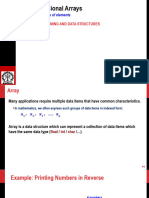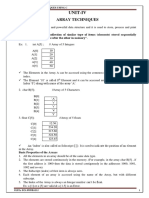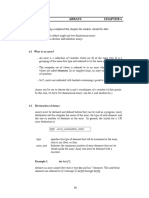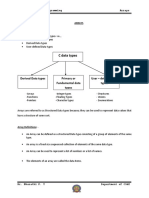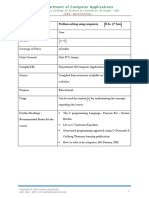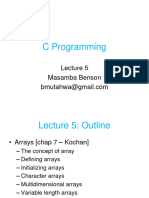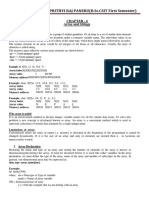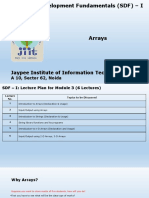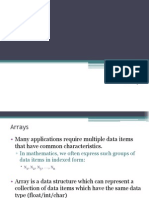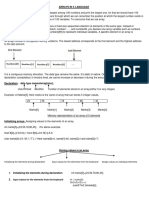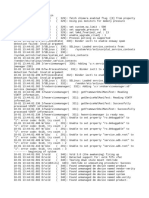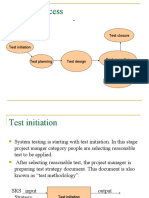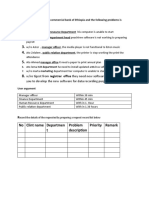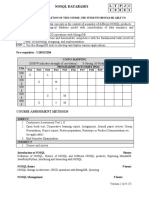0% found this document useful (0 votes)
33 views61 pagesArrays
The document provides an overview of one-dimensional arrays in programming, explaining their structure, declaration, and usage in C. It includes examples of reading, printing, and manipulating array elements, as well as common operations like finding the minimum value and implementing sorting algorithms. Additionally, it discusses memory allocation for arrays and the importance of array bounds checking.
Uploaded by
jaishriganeshaynamahCopyright
© © All Rights Reserved
We take content rights seriously. If you suspect this is your content, claim it here.
Available Formats
Download as PDF, TXT or read online on Scribd
0% found this document useful (0 votes)
33 views61 pagesArrays
The document provides an overview of one-dimensional arrays in programming, explaining their structure, declaration, and usage in C. It includes examples of reading, printing, and manipulating array elements, as well as common operations like finding the minimum value and implementing sorting algorithms. Additionally, it discusses memory allocation for arrays and the importance of array bounds checking.
Uploaded by
jaishriganeshaynamahCopyright
© © All Rights Reserved
We take content rights seriously. If you suspect this is your content, claim it here.
Available Formats
Download as PDF, TXT or read online on Scribd
/ 61



